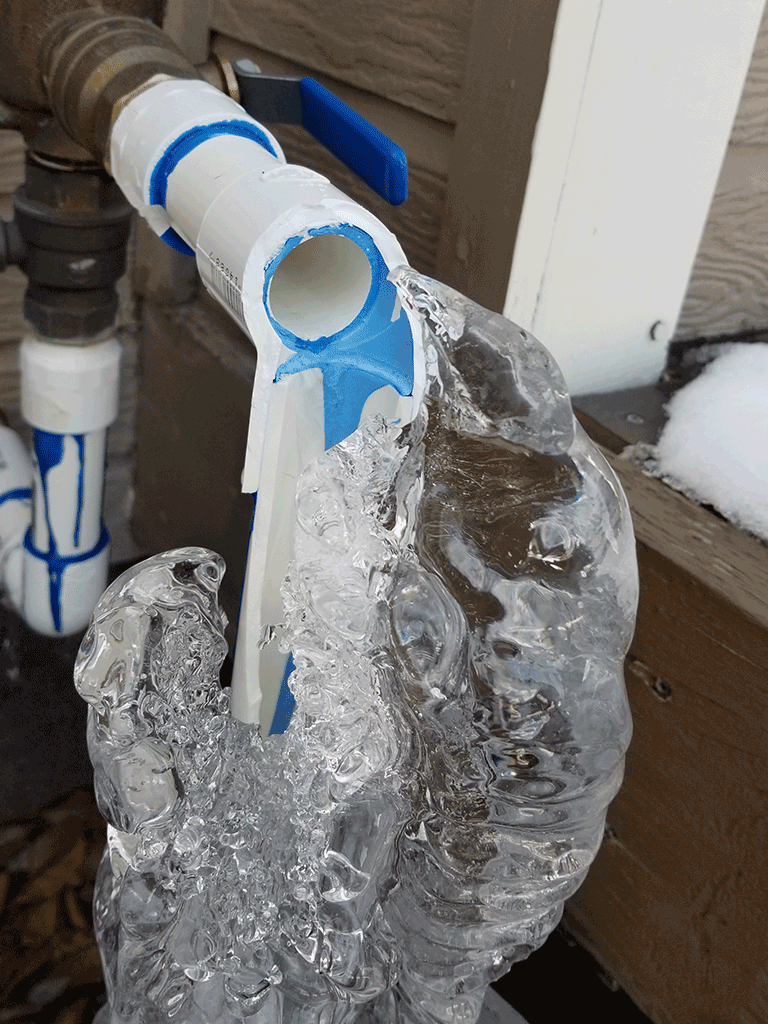Important Advice to Avoid Frozen Plumbing in Winter: Expert Insights
Important Advice to Avoid Frozen Plumbing in Winter: Expert Insights
Blog Article
What're your concepts on Helpful Tips to Prevent Frozen Pipes this Winter?

Winter can wreak havoc on your plumbing, especially by freezing pipes. Right here's just how to stop it from happening and what to do if it does.
Intro
As temperature levels drop, the risk of icy pipelines rises, possibly resulting in expensive repair work and water damage. Understanding exactly how to avoid frozen pipelines is crucial for homeowners in chilly climates.
Avoidance Tips
Insulating vulnerable pipes
Wrap pipes in insulation sleeves or utilize warm tape to safeguard them from freezing temperature levels. Focus on pipes in unheated or outside areas of the home.
Heating strategies
Maintain indoor rooms appropriately heated up, specifically areas with pipes. Open cupboard doors to permit warm air to flow around pipes under sinks.
Exactly how to determine frozen pipes
Try to find decreased water flow from taps, unusual smells or sounds from pipelines, and noticeable frost on exposed pipelines.
Long-Term Solutions
Architectural changes
Consider rerouting pipes far from outside wall surfaces or unheated areas. Add additional insulation to attic rooms, cellars, and crawl spaces.
Updating insulation
Invest in premium insulation for pipelines, attics, and wall surfaces. Proper insulation assists preserve constant temperature levels and minimizes the threat of frozen pipelines.
Safeguarding Exterior Plumbing
Garden hose pipes and outdoor taps
Disconnect and drain yard hoses prior to winter. Install frost-proof spigots or cover outside taps with shielded caps.
Recognizing Icy Pipes
What causes pipes to freeze?
Pipes freeze when revealed to temperatures below 32 ° F (0 ° C) for extended durations. As water inside the pipes ices up, it expands, taxing the pipe wall surfaces and possibly creating them to break.
Threats and problems
Icy pipes can bring about water supply disturbances, property damages, and expensive fixings. Burst pipelines can flooding homes and create considerable structural damages.
Indications of Frozen Pipeline
Determining icy pipes early can avoid them from bursting.
What to Do If Your Pipes Freeze
Immediate activities to take
If you suspect frozen pipes, keep faucets available to relieve stress as the ice thaws. Utilize a hairdryer or towels taken in warm water to thaw pipelines gradually.
Final thought
Stopping frozen pipes requires aggressive procedures and quick responses. By understanding the reasons, indicators, and safety nets, homeowners can protect their plumbing throughout winter.
6 Proven Ways to Prevent Frozen Pipes and Protect Your Home
Disconnect and Drain Garden Hoses
Before winter arrives, start by disconnecting your garden hoses and draining any remaining water. Close the shut-off valves that supply outdoor hose bibs and leave the outdoor faucet open to allow any residual water to drain. For extra protection, consider using faucet covers throughout the colder months. It’s also important to drain water from any sprinkler supply lines following the manufacturer’s directions.
Insulate Exposed Pipes
Insulating your pipes is an effective way to prevent freezing. Pipe insulation is readily available at home improvement stores and is relatively inexpensive. Pay close attention to pipes in unheated areas such as the attic, basement, crawl spaces, or garage. Apply foam insulation generously to create a buffer against the cold. You can also wrap your pipes in heat tape or thermostat-controlled heat cables for added warmth.
Seal Air Leaks
Inspect your home for any cracks or openings that could let in cold air. Seal any holes around the piping in interior or exterior walls, as well as the sill plates where your home rests on its foundation. Additionally, make sure to keep your garage door closed unless you’re entering or exiting. Leaving it open creates a significant air leak that can lead to frozen pipes.
Allow Warm Air Circulation
During cold snaps, it’s essential to allow warm air to circulate evenly throughout your home. Leave interior doors ajar to promote better airflow. Open kitchen and bathroom cabinets to help distribute heat consistently around the rooms. If you have small children or pets, be sure to remove any household chemicals or potentially harmful cleaners from open cabinets for safety.
Let Faucets Drip
A small trickle of water can make a big difference in preventing ice formation inside your pipes. When temperatures drop significantly, start a drip of water from all faucets served by exposed pipes. This continuous flow helps prevent the water from freezing. Additionally, running a few faucets slightly can relieve pressure inside the pipes, reducing the chances of a rupture if the water inside does freeze.
https://choateshvac.com/6-proven-ways-to-prevent-frozen-pipes-and-protect-your-home/

I came across that blog post on 6 Ways to Prevent Frozen Pipes when doing a lookup on the search engines. Appreciated our posting? Please share it. Let somebody else find it. Thank you for going through it.
Find Out More Report this page